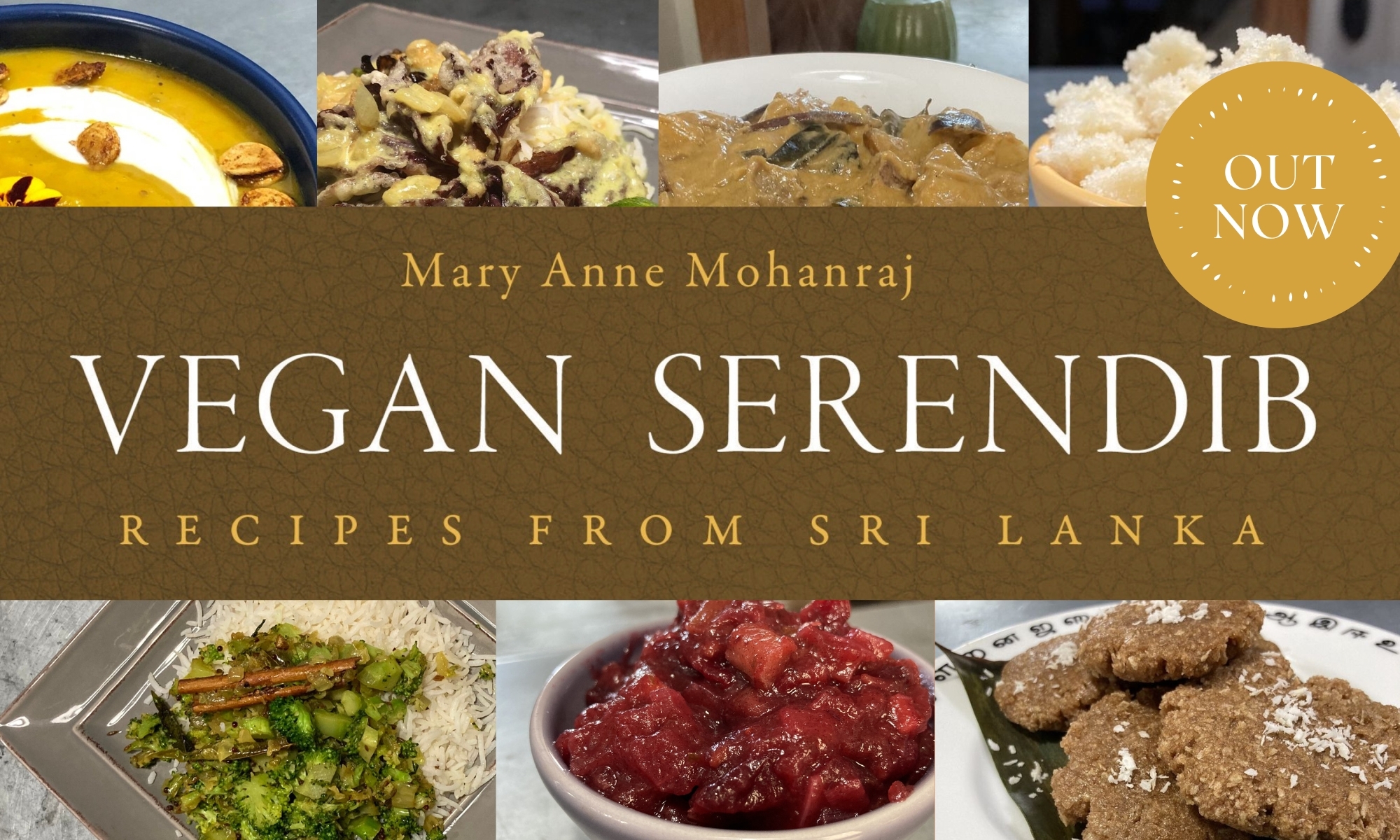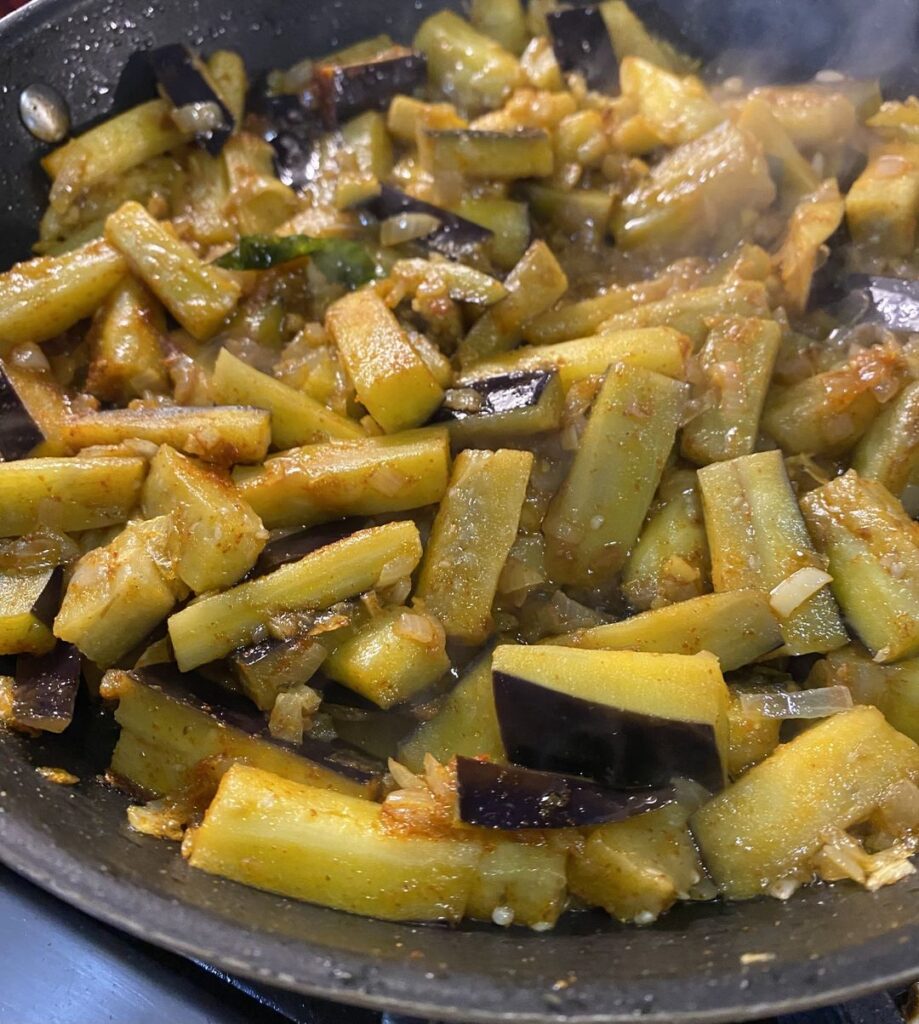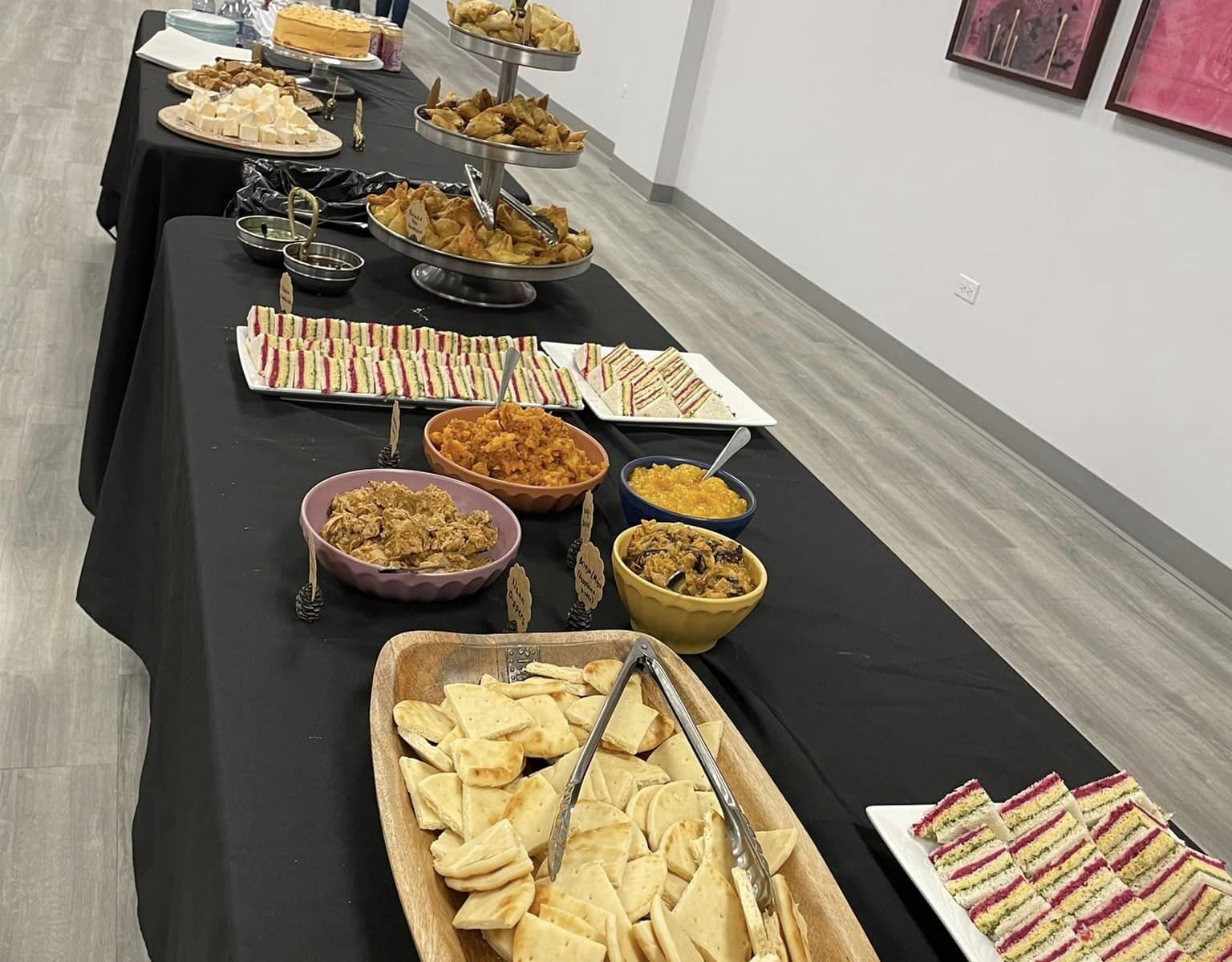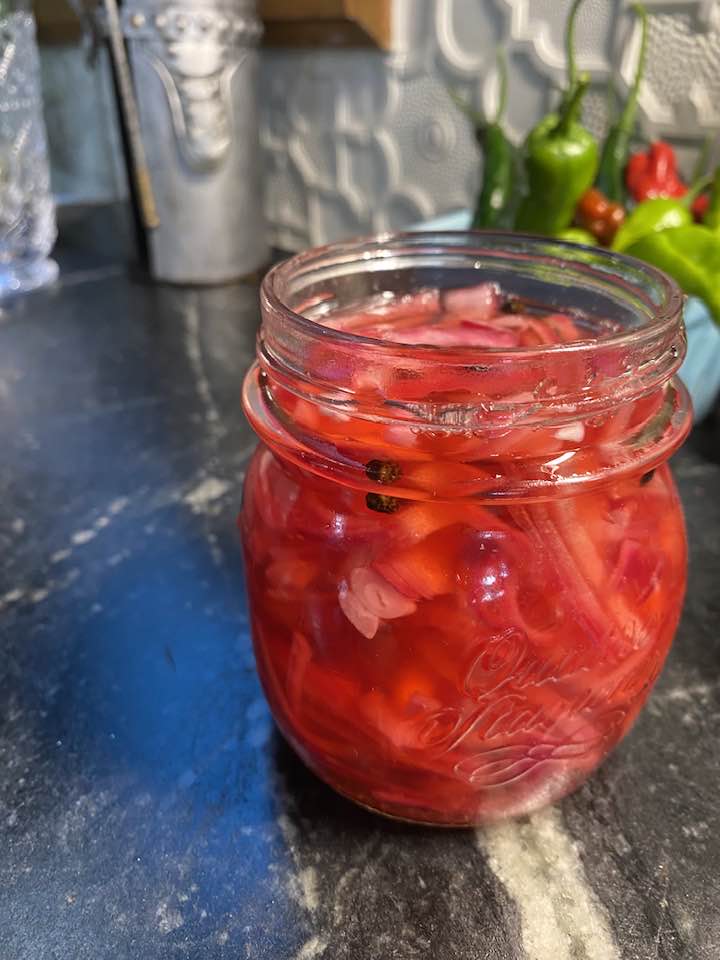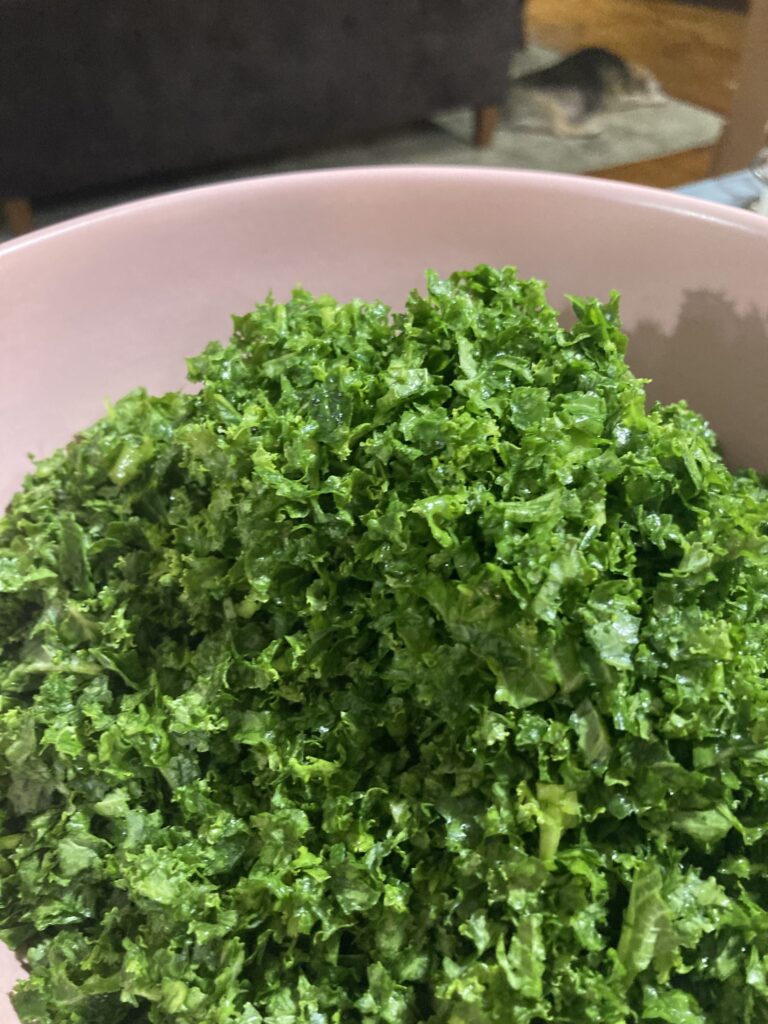(Continuing from previous post) It’s nice to have accompaniments to the meal, and one dish I know I love is fried plantains, platonos maduros. I figured at least some of the refugees would love them too. Platonos maduros is eaten all over South and Central America, with regional variations — in Venezuela, they like to add cinnamon, it turns out.
This was the easiest to do, although it helps that I could just haul out the deep fryer, pour in the corn oil, and set it to the right temperature. Kevin helped with peeling (with a knife at times — they don’t peel quite as easily as bananas) and slicing up the plantains.
I got the ripest ones they had at Pete’s (you want them yellow with lots of black on them for this dish), but some of them were not quite as ripe as I’d have liked, so the end result on those pieces was a little closer to tostones, which are also delicious.
But mostly it was just frying it up — 8 plantains ended up being 3 batches in the deep fryer, so maybe 30 minutes of active cooking time overall. Dry briefly on paper towels, then toss with cinnamon and a little lime juice, filling most of a half-foil tray. (In retrospect, I wish I’d gotten 2 more plantains — oh well!)
I also got a big container of Utz pork rinds (which seemed at least sort of similar to chicarrones?) at Costco, and some candied papaya at Pete’s, both of which are popular in Venezuela. I was, of course, tempted to try cooking them both myself, but I was trying to be reasonable with my time and not exhaust myself. Sometimes it’s better to throw a few dollars at the problem…
…oh, and speaking of which, I am really glad I Instacarted the Costco groceries, because delivery was free, and it saved me probably two hours (counting driving time) and a lot of tiredness (from lugging lots of water bottles, etc). Totally worth the delivery person tip, in terms of my energy and sanity!
